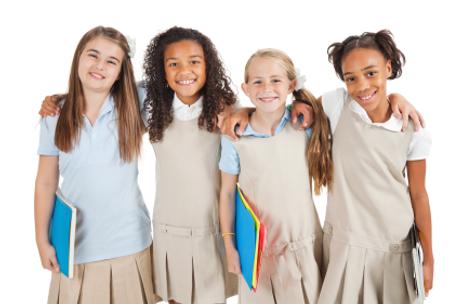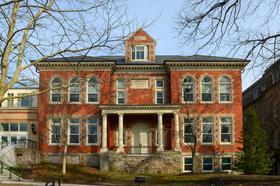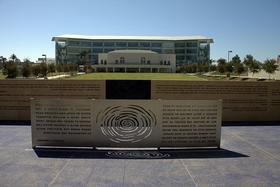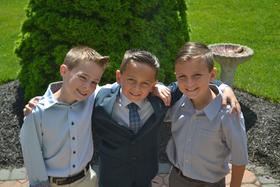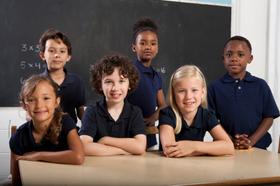A recently issued report by the Thomas B. Fordham Institute, a non-profit educational think tank, indicates that more than 1.7 million American students attend what the report terms “private-public schools” – that is, public schools where low-income students make up less than 5% of the student body.
The Fordham Institute report criticizes these “private-public schools,” arguing that they go against the ideal of a public education system whose doors are open to everyone. The report will likely spark vehement reactions both from those who share its support of school choice reforms and those who do not.
This report from the Thomas B. Fordham Institute discusses bad schools.
The Report’s Findings
Geographic Disparities
The press release accompanying the Fordham Institute analysis highlights the fact that the percentage of students attending “private-public schools” varies from state to state. Some states boast high percentages of students attending “private-public schools,” such as:
- Connecticut: 18%
- New Jersey: 17%
- South Dakota: 16%
- Arizona: 14%
- Massachusetts: 12%
However, in other states, no more than 1% of children attend “private-public schools.” The states with less than 1% of children attending “private-public schools” are:
- Florida
- Indiana
- Iowa
- Nevada
- New Mexico
- North Carolina
Racial Disparities
White and Asian students appear to be disproportionately represented in “private-public school” populations, while African-American and Latino students are under-represented. The press release accompanying the report notes that while African-American students make up 17% of public school students nationwide, they comprise only 3% of “private-public school” students. Meanwhile, while white students make up 56% of the public school population, they account for 75% of students in “private-public schools.”
Economic Disparities
The introduction to the report notes that “private-public schools…do not happen by accident.” These schools may appear in communities where zoning restrictions do not allow for affordable housing, or in communities that have histories of excluding African-Americans and other minorities from living there. Many of these “private-public schools,” the introduction notes, choose not to participate in school choice programs and strictly enforce the rule that only students living within district boundaries may attend their schools.
As a result, these schools, the report argues, are sometimes more inaccessible to low-income students than genuine private schools, which often offer at least a few scholarships to low-income students. Michael J. Petrelli, one of the report’s authors, suggests in the accompanying press release that “Perhaps [these ‘private-public’ schools] should stop calling themselves ‘public’ schools because they are hardly open to the public.”
This video looks at the challenges of turning around an under-performing school.
Report May Help Efforts to Increase School Choice
The report is being seen as a potentially powerful tool by those who advocate for increased school choice. In their introduction to the report, authors Michael J. Petrilli and Janie Scull write that they see a “double standard” in effect when people support spending taxpayer dollars on schools that “do not serve the larger ‘public’ of American society,” but oppose school choice for children who are not lucky enough to live in a district containing these “private-public schools.”
The New York Times reports that the release of this report may help those in New Jersey who have been pushing for increased school choice through expanded use of vouchers and charter schools. Derrell Bradford, executive director of a Newark, New Jersey-based school choice advocacy group, told the Times that the Fordham report shows that New Jersey’s policies “have failed to extend a lifeline to many low-income kids in districts with high numbers of chronically underperforming schools.”
Because New Jersey is receiving attention as having the largest number of “private-public schools,” it may feel a strong sense of pressure to take steps to make changes. The New Jersey State Assembly is currently considering legislation that would expand a school choice program begun in 2000. For those who want to see the number of “private-public schools” in the state decrease, the Fordham Institute report has arrived at a welcome time.
This video looks at an under-performing school.
“Private Public Schools” Respond
The Cincinnati Inquirer's report on the study points out that the Fordham Institute has been a long-time advocate of educational choice in the form of charter schools and vouchers for private school parents. Some school districts that include “private-public schools” take issue with the report’s suggestions.
Tracey Carson, a spokesperson for an Ohio school district, Mason City Schools, which includes two schools on Fordham’s “private-public” list, told the Inquirer that "We think the real story here is that a lot of public schools, like Mason, are getting it right. This doesn't make us a pseudo 'private' school - instead, it makes us a responsive public school, whose community values education and expects high levels of achievement from its students."
Whether your child attends a “true” public school or a “private” public school, the Fordham Institute report has certainly triggered a response on both sides of the issue.
Questions. Contact us on Facebook. @publicschoolreview

